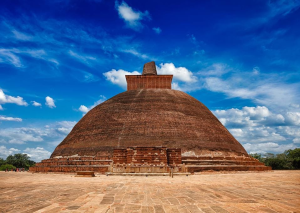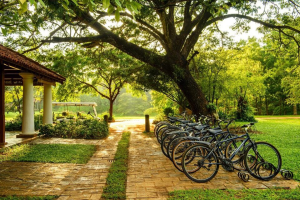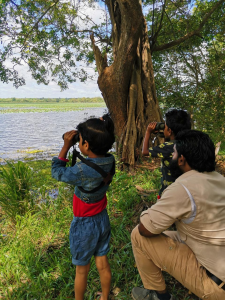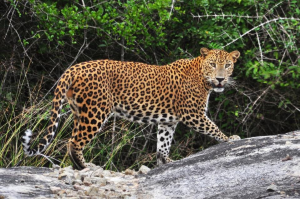Few places in the world can offer families such a remarkable combination of stunning landscapes, pristine beaches, captivating cultural heritage and unique wildlife experiences within such a compact location like the island of Sri Lanka.
There are eight UNESCO World Heritage Sites, over 800 miles of coastline (much of it pristine beach), 15 national parks showcasing abundant wildlife, miles of lush tea estates and botanical gardens, 350 waterfalls, and a culture that extends back to over 2,500 years.
Sri Lanka, a teardrop-shaped island in the Indian Ocean, lies south of India and is a stone’s throw from the Maldives. This part of Asia is where the original soul of Buddhism still flourishes and where nature and wildlife are abundant and unspoiled.
Start your journey in Anuradhapura, which is considered to be the original capital of Sri Lanka. Rich with culture and history, it is home to ancient temple ruins, some of the largest stupas of the world and palaces dating back to the 10th Century BC. Anuradhapura is recognized as a UNESCO World Heritage Site.
On your way to see Anuradhapura’s attractions, stop to see the architectural wonder of the rock fortress of Sigiriya – the impressive citadel built by the rebel king Kashyapa. Gardens, bathing pools, rock carvings, and a palace perched on the majestic rock as well as colorful frescos on the rock walls are the highlights of this historical site.
Minneriya National Park, famous for the annual gathering of its elephants –one of the world’s largest recorded assemblies of elephants – is teeming with wildlife and should not be missed.
Wilpattu National Park is the place to go to see Sri Lankan elephants, the elusive leopards, sloth bears, spotted deer, buffaloes, sambar, mongoose, and over 30 species of animals, exotic birdlife, reptiles, and amphibians. The park is spread over an area of approximately 500 square miles.
After families explore Anuradhapura, the next stop should be to Ruhuna National Park, commonly known as Yala. Here you’ll find semi-deciduous and thorn forests, grasslands, freshwater and marine wetlands and sandy beaches where the only footprints you will see belong to foraging birds and animals.
It is the largest and oldest of a chain of six national parks and three sanctuaries in the vicinity and by far the richest in biodiversity, boasting 44 different resident mammal species and one of the highest leopard population densities in the world. There are also dozens of reptile species, including turtles, crocodiles, flying snakes and elegant fan-throated lizards. As for birds, Yala has no less than 215 resident and migrant species, of which the flamboyant peacock is one of the most common.
Apart from Yala and its satellite parks, other nearby attractions include the Great and Little Basses reefs, which is an ideal spot to see blue and humpback whales as well as dolphins.
Sri Lanka will feel like an adventure for the whole family, from animal encounters with elephants, leopards and baby turtles hatching on the shores of the Indian Ocean, to plenty of culture and history thrown in.
Source/full story: https://www.forbes.com/sites/judykoutsky/2023/04/22/why-families-are-traveling-to-sri-lanka-a-bucket-list-destination/?sh=16d5510a622a




